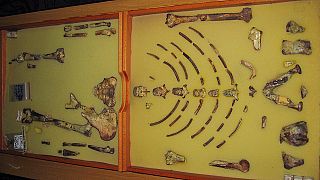Ethiopia
The fossilised remains of Lucy, one of the world’s most famous prehistoric skeletons, have left Ethiopia for display in Europe for the first time. The 3.2-million-year-old specimen, belonging to the early human ancestor Australopithecus afarensis, will be exhibited at Prague’s National Museum for two months.
Discovered in 1974 in Ethiopia, Lucy’s partial skeleton—about 40% complete—offered groundbreaking evidence of early bipedalism, a defining step in human evolution. “Her scientific value is one thing,” says Yohannes Haile-Selassie, Director of the Institute of Human Origin at Arizona State University, “but Lucy… is such an iconic specimen that she belongs to the whole world. Sharing her with the rest of the world is something that everybody would love to see and to do.”
Haile-Selassie likens Lucy’s journey to that of a “diplomat,” forging connections between people and governments. Tourists visiting her in Addis Ababa ahead of the trip expressed mixed feelings—some celebrated the chance for more people to connect with humanity’s shared history, while others argued she should remain in Ethiopia.
Lucy will be displayed alongside Selam, a fossil of a baby Australopithecus discovered in the same region and dating back even further. Czech National Museum Director General Michal Lukeš called the loan “a unique insight into the past” and a chance to deepen understanding of humanity’s roots.











01:01
Shanghai Museum opens for 168 hours for a final look at ancient Egypt
01:14
Rabat's National Museum of Jewelry showcases rich Moroccan heritage and craftsmanship
01:00
‘Extinct in the wild’ Barbary lion cubs in Czech zoo prepare for relocation
01:10
Ethiopia appoints new envoy to Somalia as ties improve
Go to video
Over 140 Ethiopian migrants presumed dead after shipwreck off Yemen
01:10
Ethiopians plant 700 million tree seedlings in a day in reforestation campaign